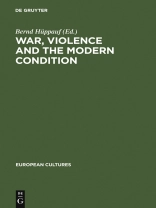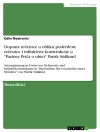Cuprins
Frontmatter – Introduction: Modernity and Violence: Observations Concerning a Contradictory Relationship – Violence and Modernity – The Great War and the Persistence of Tradition: Languages of Grief, Bereavement and Mourning – Starting from Scratch: Concepts of Order in No Man’s Land – The Therapeutic Response: Continuities from World War One to National Socialism – From War Economy to “New Economy”: World War I and the Conservative Debate about the ‘other’ Modernity in Germany – Codes of War and Violence – Some Lessons of the War: The Discourse on the Propaganda and Public Opinion in Germany in the 1920s – Blitzkrieg: “God Stinnes” or the Depoliticization of the Sublime – The fiftieth Anniversary of the Allied Air Raids on Dresden: A Half Century of Literature and History Writing – Sexy Nazis and Daddy’s Girls: Fascism and Sexuality in Film and Video since the 1970s – Bodies, Souls and Modern Warfare – Aesculap in the Trenches: Aspects of German Medicine in the First World War – The Failure of Love: A Lesser Theory of the Great War – Benn’s Body. Masculine Aesthetics and Reproduction in Gottfried Benn’s Essays – Women in the Military and the Cult of Masculinity – Artistic and Literary Representations of Modern Warfare – “A Murderous Carnival”: German Artists in the First World War – Arnold Zweig’s War Novellas of 1914 and their Versions: Literature, Modernity and the Demands of the Day – War and Novel: Alfred Döblin’s “Wallenstein” and “November 1918” – Violent Orders in Robert Musil’s “Der Mann ohne Eigenschaften” and Thomas Bernhard’s “Kalkwerk” – “Les peuples meurent, pour que Dieu vive”: Gertrud Kolmar’s Consecration of the Protagonists in the Drama of the French Revolution – Laws of War and Revolution: Violence in Heiner Müller’s Work – Bibliography – List of Illustrations – Notes on Contributors – Index – Backmatter












